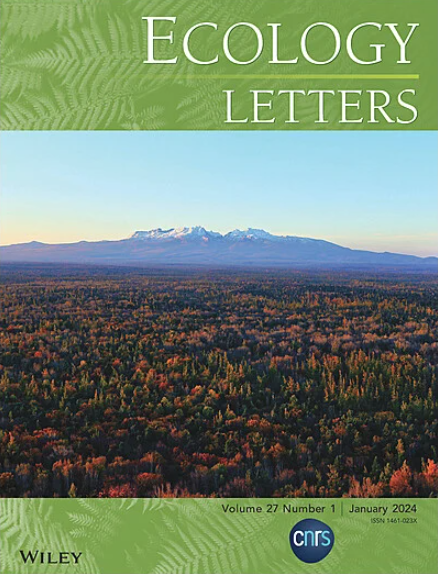植物入侵通过不对称竞争降低了群落持续存在的可能性。
IF 7.9
1区 环境科学与生态学
Q1 ECOLOGY
引用次数: 0
摘要
植物入侵是生态群落物种流失的重要驱动因素。然而,预测其对多物种共存的影响仍然是一个挑战。本研究以5种本地种和5种非本地种为研究对象,采用Ricker模型对交互作用系数和种群增长率进行了估计。我们通过整合多物种相互作用的结构方法评估了非本地物种对群落持续潜力的影响,并估计了共存概率。我们发现,入侵后群落的持续潜力普遍下降,可行性域(即所有物种同时共存的概率)变得更加不对称,因为更多的本地物种被非本地物种取代。有趣的是,在非本地物种占主导地位的群落中,在随机环境扰动下,它们更有可能首先被排除在外。我们的研究结果强调了澄清随机干扰下物种相互作用结构对形成群落持久性的重要性,并提出了有针对性的入侵管理策略来优化资源配置。本文章由计算机程序翻译,如有差异,请以英文原文为准。
Plant Invasion Decreases the Likelihood of Community Persistence Through Asymmetric Competition.
Plant invasion is a significant driver of species loss in ecological communities. However, projecting its impact on multispecies coexistence remains a challenge. Here, we conducted pairwise experiments with five native and five non-native species, using the Ricker model to estimate interaction coefficients and population growth rates. We assessed the impact of non-native species on community persistence potential through a structural approach that integrates multispecies interactions and estimates coexistence probabilities. We found that community persistence potential generally declined after invasion, with the feasibility domain (i.e., the probability that all species co-occur simultaneously) becoming more asymmetric as more native species were replaced by non-native ones. Interestingly, non-native species were more likely to be excluded first under random environmental perturbations in communities where they were dominant. Our findings highlight the importance of clarifying species interaction structure under random disturbances in shaping community persistence and suggest tailored invasion management strategies to optimise resource allocation.
求助全文
通过发布文献求助,成功后即可免费获取论文全文。
去求助
来源期刊

Ecology Letters
环境科学-生态学
CiteScore
17.60
自引率
3.40%
发文量
201
审稿时长
1.8 months
期刊介绍:
Ecology Letters serves as a platform for the rapid publication of innovative research in ecology. It considers manuscripts across all taxa, biomes, and geographic regions, prioritizing papers that investigate clearly stated hypotheses. The journal publishes concise papers of high originality and general interest, contributing to new developments in ecology. Purely descriptive papers and those that only confirm or extend previous results are discouraged.
 求助内容:
求助内容: 应助结果提醒方式:
应助结果提醒方式:


